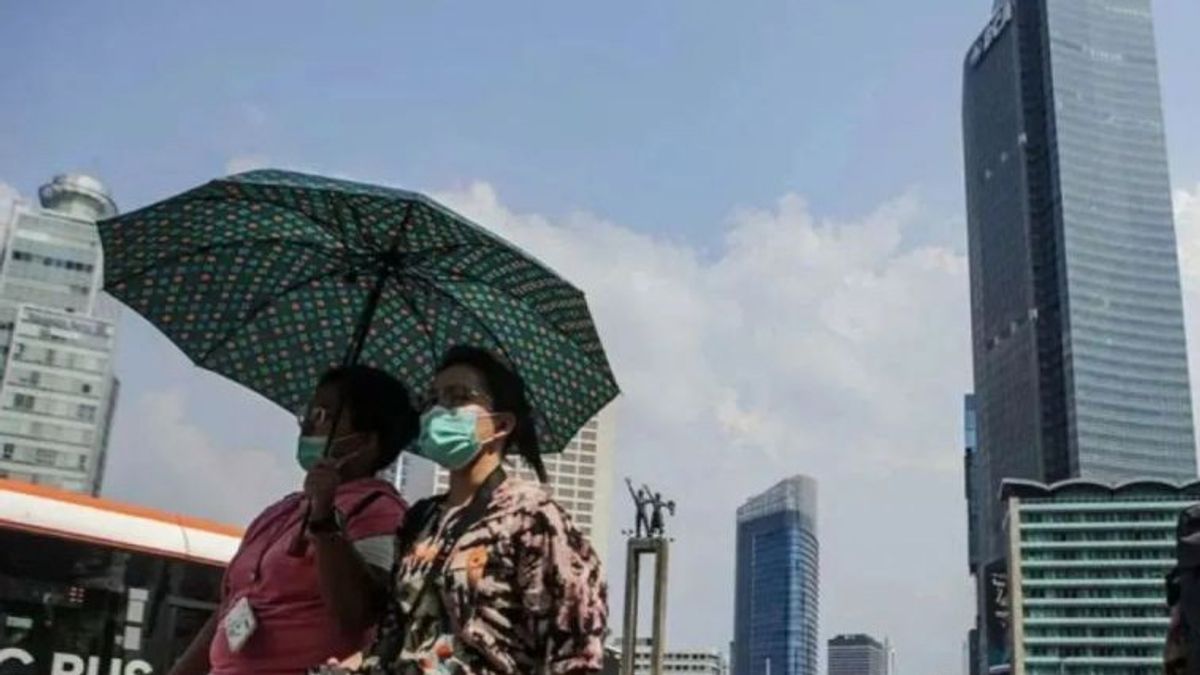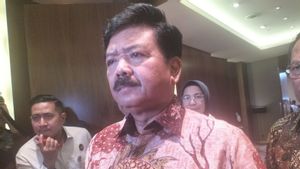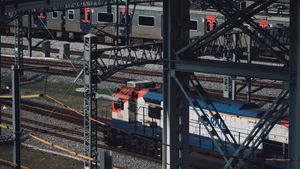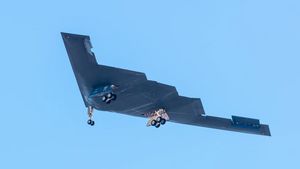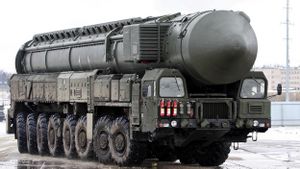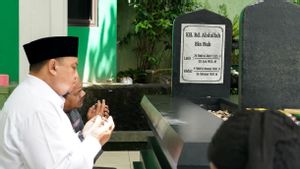JAKARTA - The Meteorology, Climatology and Geophysics Agency (BMKG) revealed that Jakarta's surface temperature increased significantly by 1.6 degrees Celsius in the last 130 years due to the change in the landscape from the previous dominant plant vegetation to the property area.
BMKG's Extreme Weather and Climate Practitioner Siswanto said the increase in Jakarta's surface temperature was stronger than the global and regional temperature increases.
"The Jakarta climate has changed significantly along with the growth of the city. This indicates an increase in surface temperature by one degree Celsius which can increase the extremity of rain by 14 percent," said Siswanto as quoted by ANTARA, Wednesday, June 5.
The drastic increase in surface temperature, he continued, has caused extreme rainfall in Jakarta to experience a significant upward trend with the nature of rainfall that has changed.
Rain is getting heavier, but the duration is shorter. Rainfall increases in the morning and shifts in the afternoon and evening rain, as well as increased frequency and intensity of rain in the rainy season.
Siswanto explained that urban climate is defined as a climate situation that is very different from the surrounding rural area. This condition is due to urban developments.
One of the triggers for urban climate characteristics, he said, is urbanization, landscape change, and the use of all properties in urban areas such as energy, water management, and land governance.
Based on the results of Landsat satellite imaging for Jakarta in 1972, added Siswanto, the area being built in Jakarta is still limited with more dominant vegetation.
A decade later in 1982, vegetation still looks dominantly green. Temperatures have not changed much with an average of 28 degrees Celsius, although the maximum temperature has increased on average from 31.7 degrees Celsius to 32.2 degrees Celsius.
"The minimum temperature is still not too far from 24.3 degrees Celsius to 24.7 degrees Celsius," said Siswanto.
15 warsa later precisely in 1997, he said, the red color or residential area was very expansive. The change in the landscape was followed by changes in air temperature from an average to 28.4 degrees Celsius up about 0.4 degrees Celsius.
At that time the maximum temperature did not change much and the minimum temperature at night was 25 degrees Celsius.
SEE ALSO:
In 2005, the development of the Jakarta residential area was increasingly expansionary until 2014. The residential area is getting denser not only in Jakarta, but also outside the Jakarta limit.
"Changes in the environment are compatible with climate change or temperature change, in this case what happened in Jakarta," said Siswanto.
Siswanto revealed that around 1675 to 1725, Jakarta's settlements were not yet congested and there were still towering mountains in the Bogor area.
After the VOC entered around 1755-1785, Jakarta began to develop, the mountains began to remain unclear. In 2018 the mountains or hills that were previously seen have disappeared.
"We will continue to experience that change, but what is certain is that changes in the landscape and the environment will have consequences, one of which is the consequences of climate," said Siswanto.
Head of the Climate and Atmospheric Research Center of the National Research and Innovation Agency (BRIN) Albertus Sulaiman said changes in Jakarta's surface temperature require serious treatment, especially researchers who are qualified in climate and atmospheric science.
The problem in our current world is related to the Sustainable Development Goals (SDGs), especially about life being better and more sustainable. Science or science plays a role in solving problems, especially related to urban urban climates," said Albertus.
The English, Chinese, Japanese, Arabic, and French versions are automatically generated by the AI. So there may still be inaccuracies in translating, please always see Indonesian as our main language. (system supported by DigitalSiber.id)
